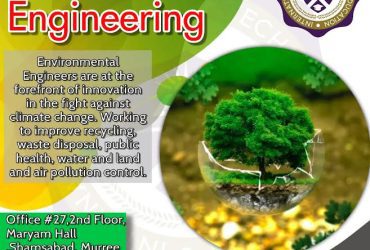Ad Details
-
Ad ID: 777221
-
Added: December 9, 2023
-
Sale Price: ₨123
-
Regular Price: ₨123
-
Location: Pakistan
-
State: KPK Khybar
-
City: Mardan
-
Phone: 03115193625
-
Views: 185
-
Website: www.icollegete.com
Description
CIVIL sURVEYOR DIPLOMA COURSE IN CHARSADDA BATTAGRAM
This course program includes extensive field practice in the use of electronic and optical instruments used for measuring distance, elevations and angles from one point to another.In this context, our students experience live work on latest equipment such as lite auto level GPS, total station electronics laser.A survey course is typically a course of broad disciplinary perspective. Often, the survey can incorporate different aspects and content from a specific field, but can also include content from other disciplines for which all of the content may share common objectives.Civil Engineering Surveyors are involved in every stage of the project from initial concept through design and construction, to monitoring the condition and performance of the completed structure. (Engineering Surveying).Surveyors and Civil engineers remain in high demand as construction booms in the world. Inspire institute of technologies Pakistan Diploma program in Civil Surveying Engineering Technology will give you the skills to work as a qualified technician in civil engineering and land surveying so you can jump into this exciting field with both feet. IITP Civil Survey Institute is a premier provider of surveying, construction, engineering, and environmental training services to public and private sector. We have affiliations from TTB, TTPC, SDC, PSSC and SECP Government of Pakistan. All the trainings we provide in the field of civil are totally practical and professional. We have Qualified, experienced and well trained professional teachers.Surveying or land surveying is the technique, profession, and science of determining the terrestrial or three-dimensional position of points and the distances and angles between them. A land surveying professional is called a land surveyor. These points are usually on the surface of the Earth, and they are often used to establish land maps and boundaries for ownership, locations like building corners or the surface location of subsurface features, or other purposes required by government or civil law, such as property sales. Surveyors work with elements of geometry, trigonometry, regression analysis, physics, engineering, metrology, programming languages and the law. They use equipment like total stations, robotic total stations, GPS receivers, retro reflectors, 3D scanners, radios, handheld tablets, digital levels, drones, GIS and surveying software. Surveying has been an element in the development of the human environment since the beginning of recorded history. The planning and execution of most forms of construction require it. It is also used in transport, communications, mapping, and the definition of legal boundaries for land ownership. It is an important tool for research in many other scientific disciplines.Civil Surveying or land surveying is the technique, profession, art and science of determining the terrestrial or three-dimensional positions of points and the distances and angles between them. A land surveying professional is called a land surveyor.
Surveyors determine the position of objects by measuring angles and distances. The factors that can affect the accuracy of their observations are also measured. They then use this data to create vectors, bearings, coordinates, elevations, areas, volumes, plans and maps. Measurements are often split into horizontal and vertical components to simplify calculation. GPS and astronomic measurements also need measurement of a time component.
Angle Measurement
Historically, horizontal angles were measured by using a compass to provide a magnetic bearing or azimuth. Later, more precise scribed discs improved angular resolution. Mounting telescopes with reticles atop the disc allowed more precise sighting (see theodolite). Levels and calibrated circles allowed measurement of vertical angles. Verniers allowed measurement to a fraction of a degree, such as with a turn-of-the-century transit. The plane table provided a graphical method of recording and measuring angles, which reduced the amount of mathematics required. In 1829 Francis Ronalds invented a reflecting instrument for recording angles graphically by modifying the octant. By observing the bearing from every vertex in a figure, a surveyor can measure around the figure. The final observation will be between the two points first observed, except with a 180° difference. This is called a close. If the first and last bearings are different, this shows the error in the survey, called the angular misclose. The surveyor can use this information to prove that the work meets the expected standards.
Levelling
The simplest method for measuring height is with an altimeter using air pressure to find height. When more precise measurements are needed, means like precise levels (also known as differential leveling) are used. When precise leveling, a series of measurements between two points are taken using an instrument and a measuring rod. Differences in height between the measurements are added and subtracted in a series to get the net difference in elevation between the two endpoints. With the Global Positioning System (GPS), elevation can be measured with satellite receivers. Usually GPS is somewhat less accurate than traditional precise leveling, but may be similar over long distances.














Leave a Comment
Your email address will not be published. Required fields are marked. *